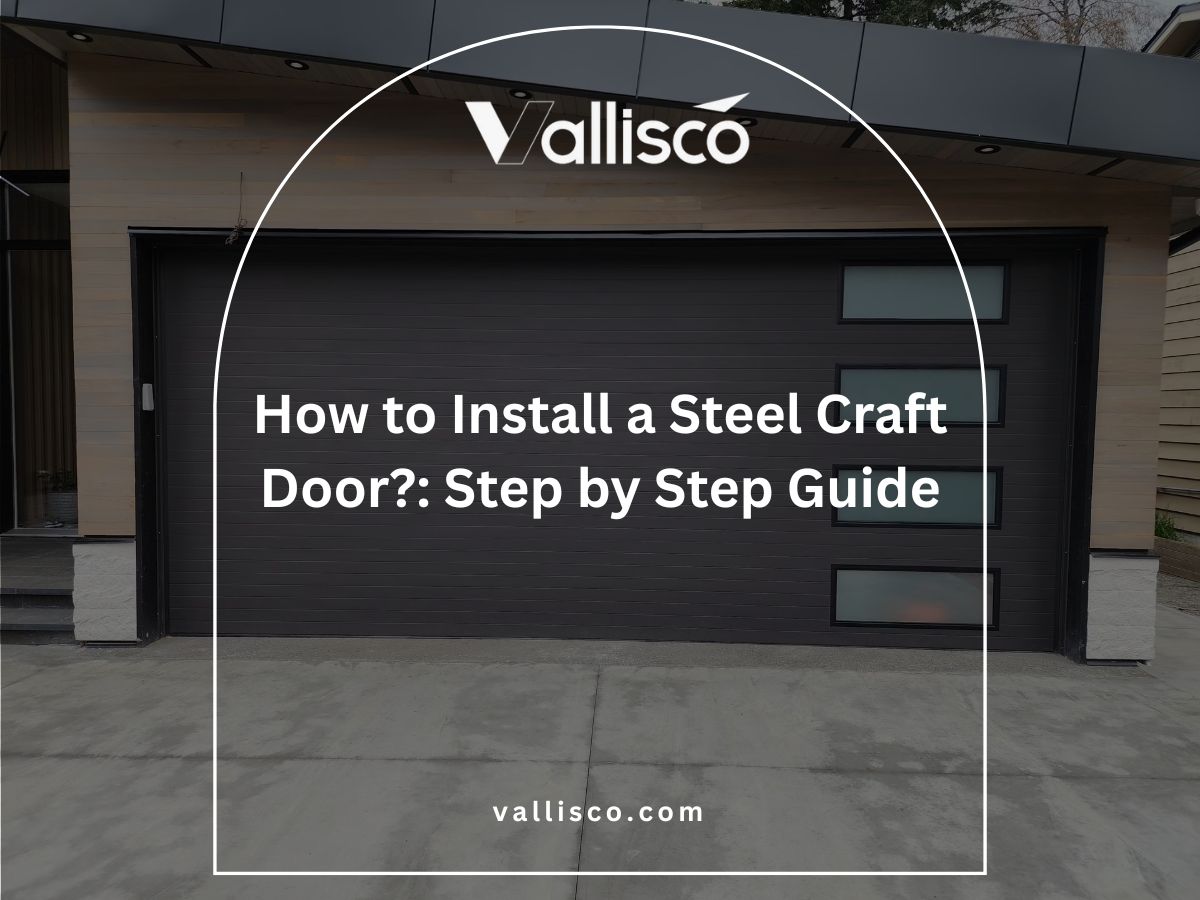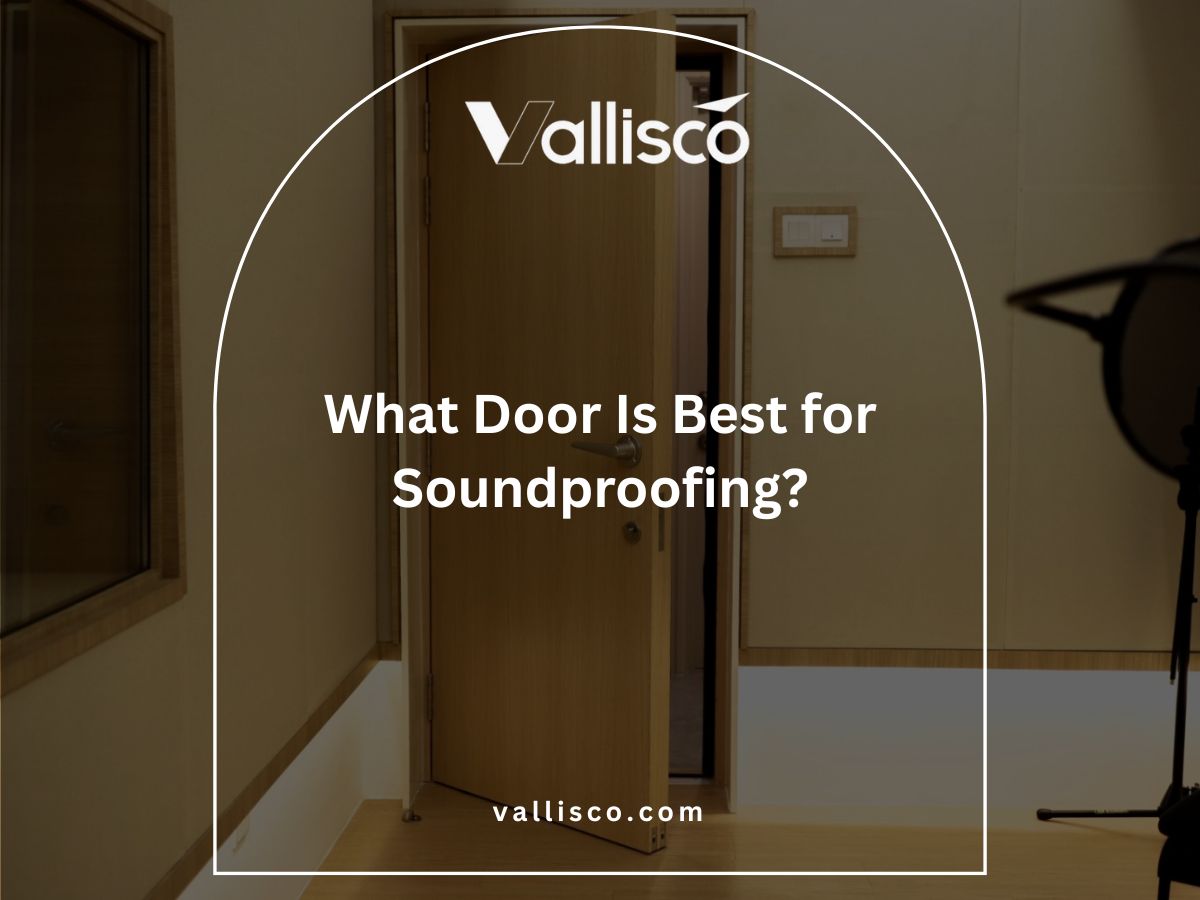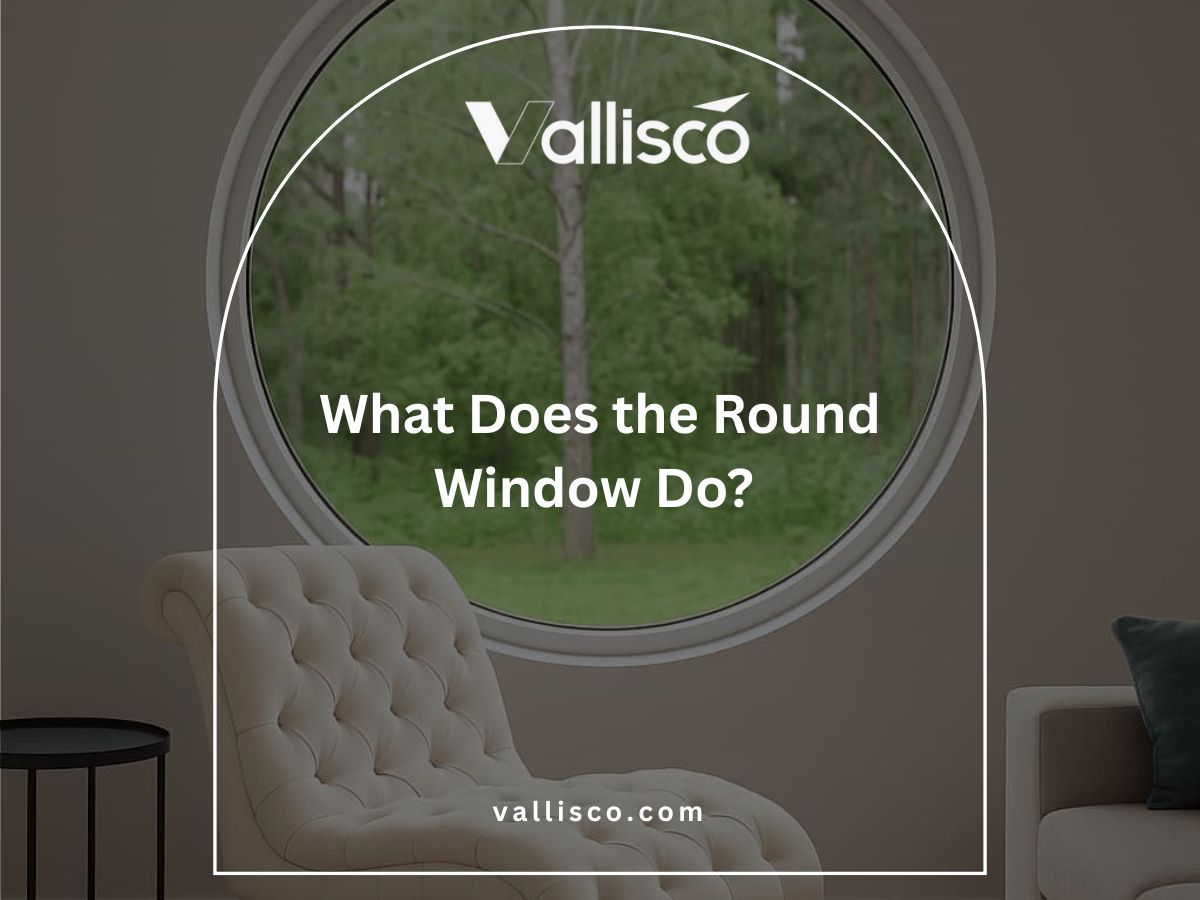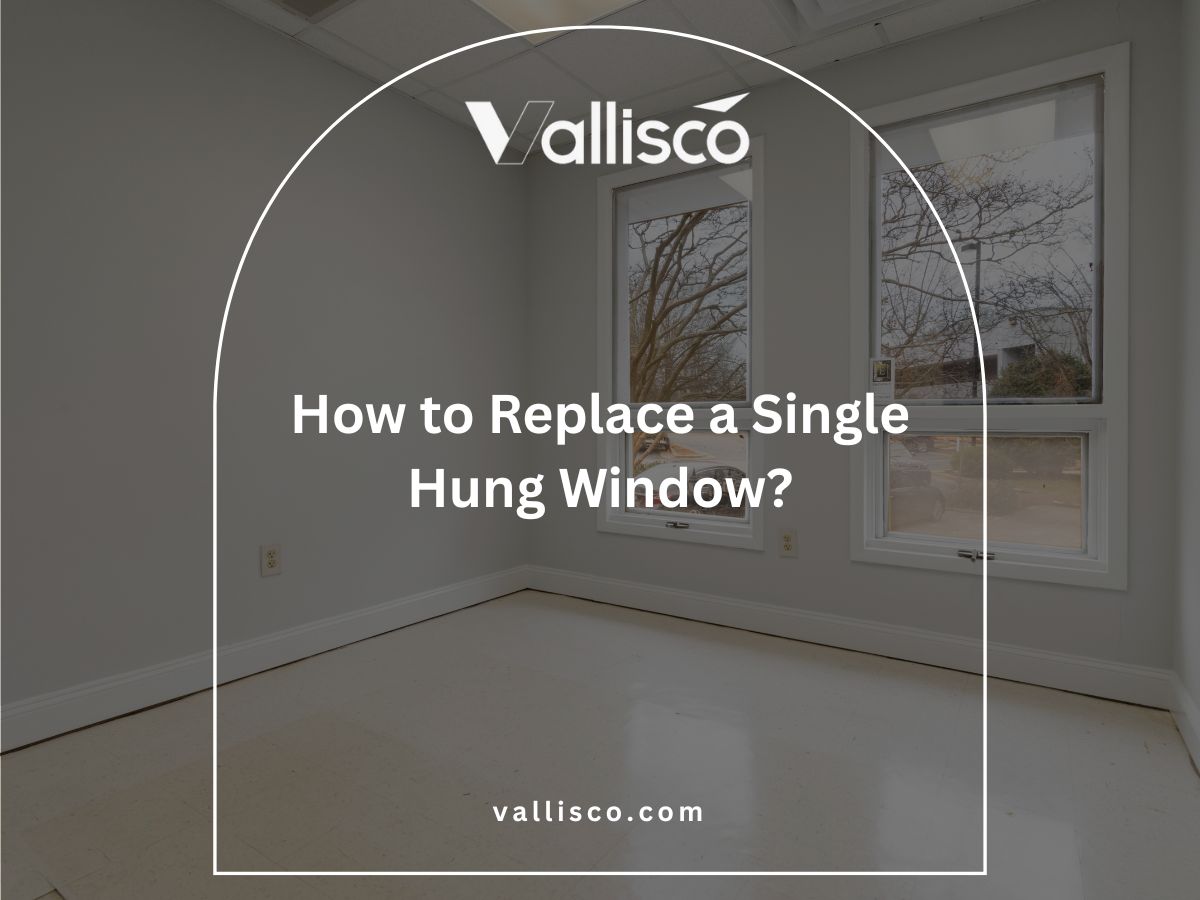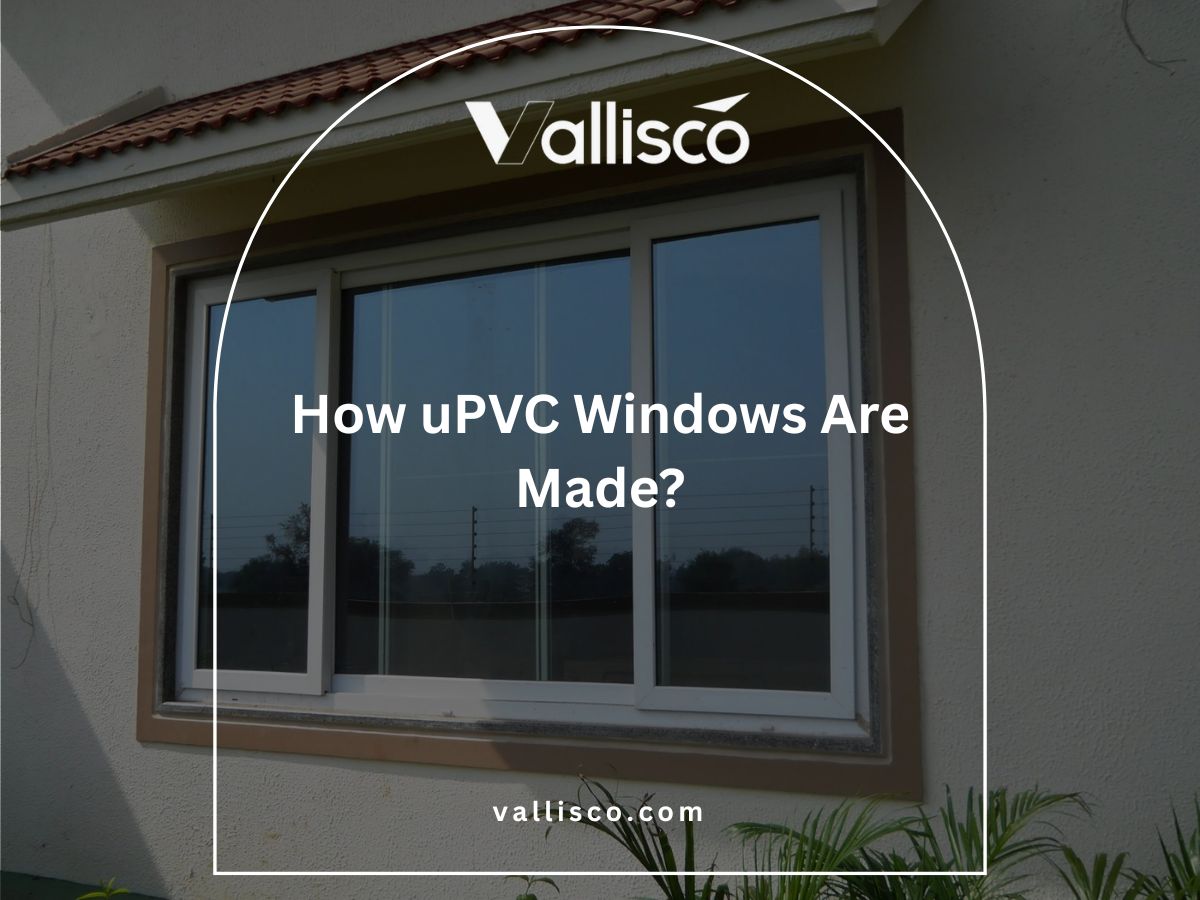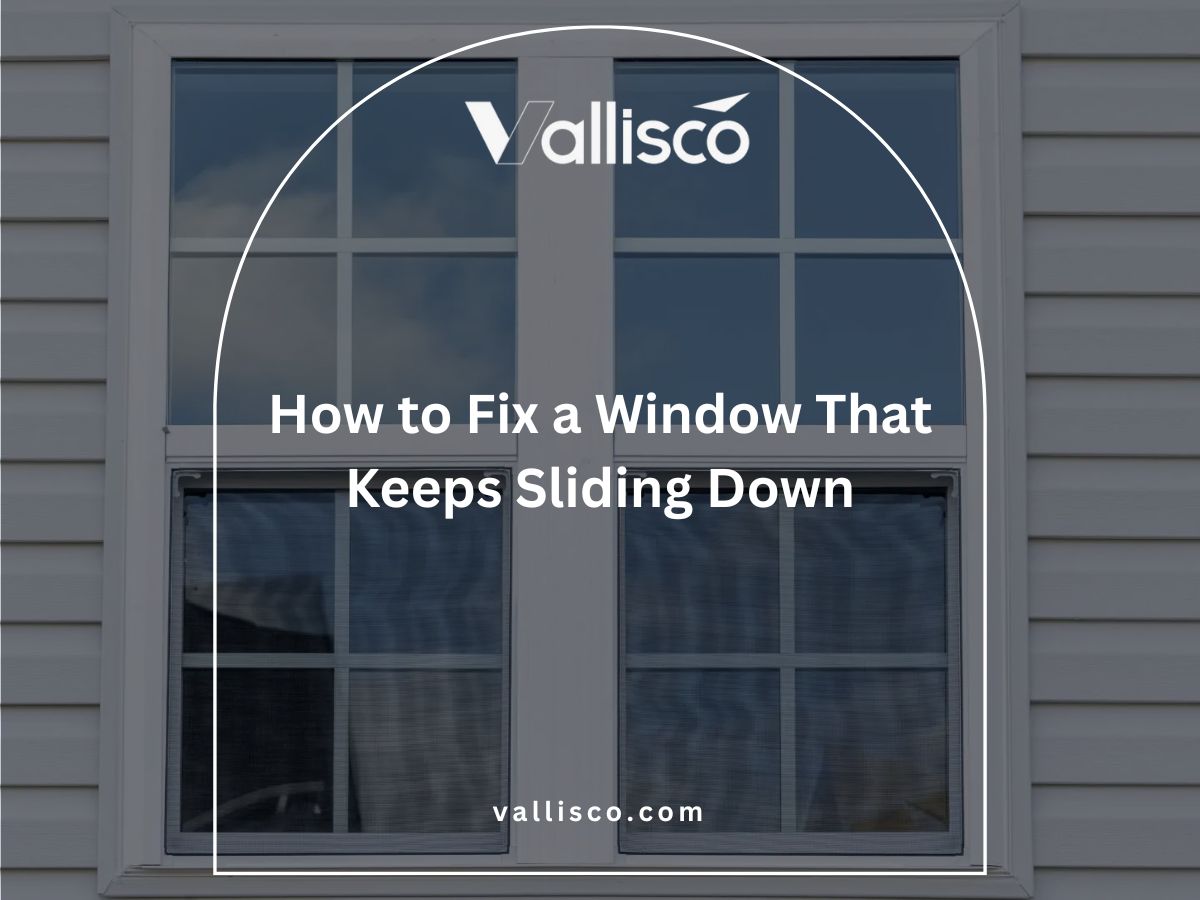I still remember the project that almost didn’t finish on time. A mid-sized apartment building with 36 units. The layout was done, the colors picked, but the doors?
That’s where things got messy. The client wanted something simple but modern. Affordable, but not cheap-looking. And it had to work across every unit, without feeling repetitive. We spent hours sifting through catalogs, but nothing felt quite right.
Since then, I’ve helped dozens of builders, hotel owners, and engineers avoid that same issue. Door choices are often left to the last minute, but they impact a lot more than you might think cost, looks, and tenant experience.
If you’re searching for apartment door ideas that are practical and stylish, you’re in the right place. In this guide, I’ll walk you through 12 tried-and-true options.
Let’s get started!
Quick Comparison
Before we explore each door in more depth, here’s a quick overview to help you see the differences at a glance. It’s a simple way to spot which door might work best for your space, your project, or your budget.
| Door Type | Best Use Cases | Pros | Cons | Finish Suggestions |
| Flush Panel Doors | Budget apartments, rentals, serviced units | Clean look, low cost, easy to install | Can feel plain, needs good finish | Laminate, veneer, painted |
| Wood-Grain Aluminum Doors | Villas, hotels, B&Bs in humid areas | Durable, low maintenance, warm appearance | More costly than plain aluminum, may look artificial | Oak, walnut, grey ash |
| Fire-Rated Steel Doors | Corridors, stairwells, apartment entries | Fire safe, strong, long-lasting | Heavy, may look industrial | Powder-coated, faux wood, matte black |
| Glass Panel Doors | Interior doors, balconies, small spaces | Brightens space, modern, helps small rooms feel bigger | Less private, shows smudges | Frosted, clear, aluminum-framed |
| Modern Minimalist Doors | Modern apartments, short-stay rentals | Sleek, simple, easy to maintain | May feel bland without accents | Matte black, greige, soft beige |
| Smart Entry Doors | Serviced units, B&Bs, hotels | Keyless, programmable, modern access | Needs batteries, setup can be tricky | Steel or solid-core, brushed trim |
| Louvered Doors | Laundry, bathrooms, closets | Helps air flow, budget-friendly | Not soundproof, slats collect dust | PVC, painted wood, composite |
| Soundproof Solid Core Doors | Bedrooms, hotel rooms, quiet spaces | Blocks noise, sturdy feel, adds privacy | Heavy, more expensive | MDF with seals, wood veneer, painted |
| Powder-Coated Steel Doors | Utility areas, exterior doors | Long-lasting, scratch-resistant, weatherproof | Can feel cold or industrial | Gray, bronze, black |
| Panel Doors with Molded Designs | Guest rooms, classic interiors | Decorative, budget-friendly, easy to find | Can collect dust, some styles look dated | Primed MDF, veneer, two-tone paint |
| uPVC or PVC Doors | Bathrooms, kitchens, humid zones | Fully water-resistant, lightweight, affordable | Feels plastic, lower strength | White, faux wood, matte or glossy |
| Glass + Aluminum Frame Doors | Balconies, shared spaces, small rooms | Light flow, modern look, space-saving | Less privacy, shows marks easily | Clear or frosted glass, black/silver frames |
Now that you’ve seen the big picture, let’s take a closer look at each door to help you choose what fits your project best.
1. Flush Panel Doors
Flush panel doors feature a smooth, flat surface without decorative details or raised panels. Commonly used in apartments and commercial buildings, these doors easily complement a wide range of interior styles. They offer an affordable, practical option suitable for various residential and commercial projects.
Where It Works Best
Flush panel doors work especially well in the following environments:
- Budget Apartments and Rental Units: Flush panel doors fit perfectly in affordable housing projects and large apartment complexes. Their simple, uniform style allows for consistent results without high costs.
- Hotels and Hospitality Spaces: With quick installation and minimal upkeep, flush doors suit busy hotel and serviced residence settings. Their understated look ensures a neat, professional appearance throughout the property.
- Compact and Minimalist Interiors: Flush doors add a sense of openness in small or minimalist spaces due to their flat, uncluttered design. They blend well without competing visually with interior elements.
Pros & Cons
Consider these factors when choosing flush panel doors:
Pros
- Cost-Effective: Affordable choice for large-scale or budget-conscious projects. Helps maintain consistent quality without adding extra cost.
- Quick Install: Simple design allows for fast installation. Saves time on projects with tight deadlines.
- Versatile Style: Works with both modern and classic interiors. Finish and hardware can be adjusted to match different designs.
Cons
- Too Plain: Can look basic in premium spaces. Adding upgraded handles or textured finishes can improve the appearance.
- Needs Good Finish: Quality surface treatments like veneer or high-grade paint improve appearance. Without them, the door may feel less refined.
Material + Finish Suggestions
Enhance flush panel doors with the following finishes and materials:
- Painted Finishes: Allow for custom colors and personalization, adapting to any interior scheme.
- Wood Veneers: Provide warmth, texture, and a more sophisticated appearance to elevate the basic design.
- Laminate Finishes: Offer durability, easy maintenance, and resistance to everyday wear, ideal for commercial and high-traffic settings.
Final Thoughts
Flush panel doors might seem basic at first glance, but their practicality makes them a reliable choice in numerous commercial and residential projects. After many years in the industry, I’ve seen these doors repeatedly chosen by builders, property managers, and project teams looking for consistent results without breaking the budget.
Selecting the right materials and finishes helps flush panel doors exceed expectations, keeping both tenants and property owners satisfied.
2. Wood-Grain Aluminum Doors
Wood-grain aluminum doors provide the appealing texture of timber combined with the strength of aluminum. They effectively deliver the warmth and visual comfort of natural wood, but without its common maintenance challenges. Ideal for projects requiring style, durability, and easy care, these doors offer long-term practicality.
Where It Works Best
Wood-grain aluminum doors are especially suited to the following settings:
- Villas in Humid Climates: These doors hold up exceptionally well against humidity and moisture. They provide a rustic wood-like look without the risk of warping or damage.
- B&Bs and Inns with Natural Themes: Ideal for properties wanting a natural, welcoming appearance. They create a cozy ambiance without increasing the burden of regular upkeep.
- Hotels and Balcony Entrances: Perfect for entrances or balconies where aesthetics matter as much as durability. The doors handle heavy usage and changing weather conditions effortlessly.
Pros & Cons
Before deciding on wood-grain aluminum doors, weigh these key factors:
Pros
- Weather Resistant: Handles humidity, rain, and temperature changes without warping or swelling. Performs reliably in coastal, tropical, and other demanding climates.
- Low Maintenance: Needs far less care than natural wood. Regular cleaning is enough to keep the door looking good for years.
- Realistic Look: Replicates the texture and grain of real timber convincingly. Works well for projects seeking a warm, natural appearance without the upkeep issues of wood.
Cons
- Higher Cost: Generally more expensive than plain aluminum doors. The detailed grain and finish process add to the overall price.
- Finish Quality Varies: Lower-grade finishes can look artificial or wear unevenly over time. Choosing a reputable supplier helps achieve a more authentic look.
Material + Finish Suggestions
Consider these popular finishes and grain patterns for your wood-grain aluminum doors:
- Light Oak: Offers a subtle, fresh appearance suitable for modern and airy interiors. It brightens up spaces without compromising on the natural aesthetic.
- Dark Walnut: Provides an elegant, classic style ideal for traditional or sophisticated environments. It adds depth and warmth while maintaining a natural charm.
- Grey Ash: Delivers a contemporary and understated look ideal for neutral-toned interiors. It blends seamlessly with modern design themes and subtle decor.
Final Thoughts
Wood-grain aluminum doors combine impressive durability with a warm, inviting appearance. Many project owners I’ve worked with appreciate how these doors balance aesthetics and practicality. However, to achieve the best results, invest in higher-quality finishes to avoid an artificial look that can detract from the door’s visual impact.
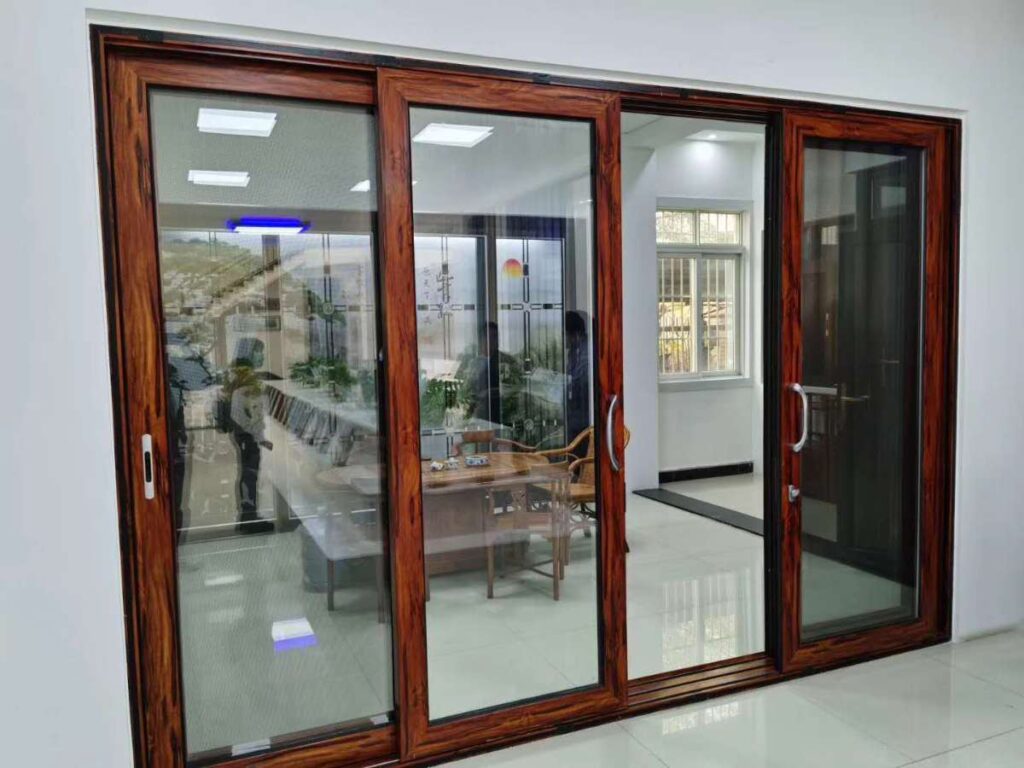
3. Fire-Rated Steel Doors
Fire-rated steel doors are heavy-duty doors specifically designed to slow down the spread of fire and smoke. They provide essential safety in residential and commercial buildings, giving occupants adequate time to exit during emergencies. Choosing these doors helps buildings meet fire codes without sacrificing design flexibility.
Where It Works Best
Fire-rated steel doors are most beneficial in these locations:
- Apartment Unit Entrances: Typically required to meet building safety codes, these doors protect individual living spaces by preventing fire from quickly spreading through hallways or between apartments.
- Hotel Corridors and Common Areas: Essential for safeguarding guests and staff, fire-rated doors provide safe escape routes and compartmentalize fire risks in corridors.
- Stairwell and Emergency Exits: Crucial in stairwells, back exits, and service doors where quick evacuation and controlled fire containment are required by law. They reinforce building safety standards without compromising the structure’s design.
Pros & Cons
Consider these key points when selecting fire-rated steel doors:
Pros
- Fire Code Compliant: Meets strict fire safety regulations and helps control the spread of fire and smoke. Provides critical protection in emergency situations.
- Strong and Durable: Built to handle heavy use without losing structural integrity. Suitable for high-traffic areas where reliability is essential.
- Soundproofing Option: Can be fitted with acoustic seals to reduce noise transfer. Improves privacy in busy or shared environments.
Cons
- Industrial Look: Without the right finish, these doors can appear too utilitarian. Adding quality coatings or textures can improve their appearance.
- Heavy Weight: Heavier than standard doors, requiring reinforced hardware and proper installation. May increase installation time and cost.
Material + Finish Suggestions
Selecting attractive finishes helps fire-rated doors match overall aesthetics:
- Powder-Coated Colors: Offers smooth finishes in various colors, allowing doors to blend seamlessly into different interior designs. This coating is durable, scratch-resistant, and suitable for high-traffic areas.
- Faux Wood Textures: Provides the look of natural wood, adding warmth and character to steel doors. Ideal for spaces that benefit from traditional or rustic aesthetics without sacrificing safety.
- Matte Black or Deep Bronze: Perfect for modern or upscale spaces, these darker finishes offer elegance and a refined visual impact. They disguise the industrial feel of steel while enhancing overall design sophistication.
Final Thoughts
Fire-rated steel doors play a critical role in safety and code compliance, particularly in multifamily and hospitality settings. Selecting these doors early can prevent costly replacements and project delays later. However, carefully choosing finishes and coatings is important to integrate these doors effectively into your overall design.
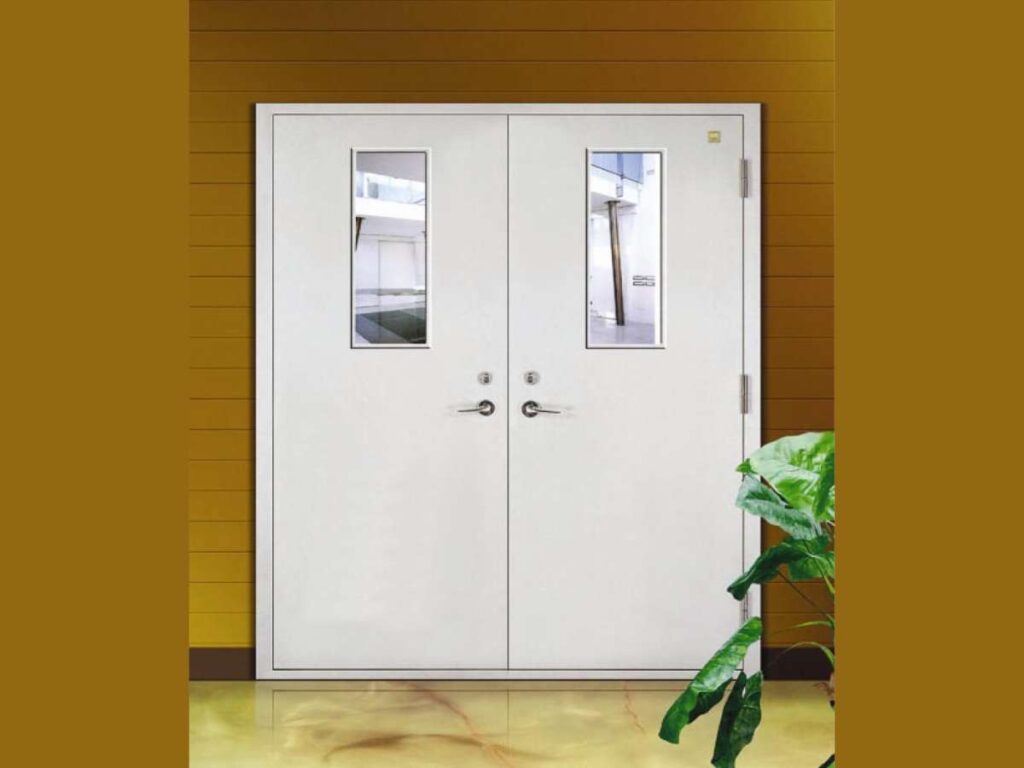
4. Glass Panel Doors (Frosted or Clear)
Glass panel doors feature one or more glass inserts, either transparent or frosted, enhancing interior aesthetics and allowing natural light flow. They combine visual openness and style, brightening spaces while maintaining privacy when needed. Often chosen for their ability to transform dim or compact areas, these doors add both charm and practical value.
Where It Works Best
Glass panel doors stand out in specific spaces needing additional light or a sense of openness:
- Balcony and Patio Entrances: These doors provide clear views and maximize daylight, making indoor spaces feel more connected to outdoor areas.
- Bathroom Entrances: Frosted glass panels help balance privacy with natural light, creating brighter yet private environments.
- Interior Spaces with Limited Natural Light: Ideal for hallways or rooms adjacent to shared daylight sources, these doors brighten up otherwise dark or enclosed areas.
Pros & Cons
Consider these advantages and drawbacks before selecting glass panel doors:
Pros
- Natural Light: Allows sunlight to pass through, brightening interior spaces. Helps make areas feel more inviting and comfortable.
- Spacious Feel: Creates a sense of openness, especially in smaller apartments. Helps visually connect spaces without removing separation.
- Modern Appeal: Adds a contemporary touch that works well with many interior styles. Enhances both residential and commercial designs.
Cons
- Privacy Limits: Clear glass reduces privacy unless frosted or treated. The level of transparency needs to be matched to the room’s function.
- Cleaning Needs: Glass surfaces show smudges, dust, and fingerprints easily. Regular cleaning is necessary to keep them looking polished.
Material + Finish Suggestions
Several finish options are available to enhance both the look and functionality of glass panel doors:
- Aluminum Frames: Lightweight yet durable, aluminum frames complement modern designs. They’re easy to maintain and pair well with clear or frosted glass.
- Wood Borders: Wood frames offer warmth and a natural aesthetic, suitable for traditional or rustic spaces. They also soften the look of glass, making interiors feel inviting.
- Painted or Stained Trim: Painted or stained trim adds visual contrast and customization. It allows doors to match specific interior themes, ensuring design consistency throughout the apartment or property.
Final Thoughts
Glass panel doors are a practical choice to introduce light, openness, and modern appeal into apartments and commercial spaces. They significantly enhance small or dark rooms by improving natural lighting and creating visual depth. However, consider glass type and finishes carefully to balance style, maintenance requirements, and necessary privacy.
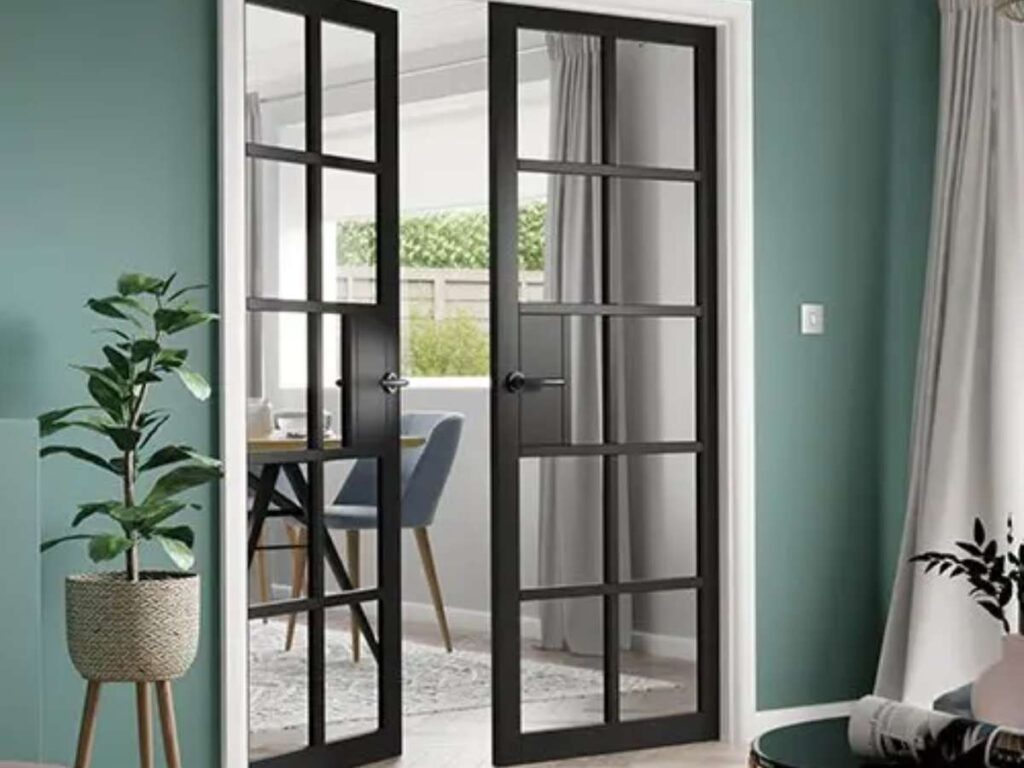
5. Modern Minimalist Doors (Flat, Matte Finish)
odern minimalist doors feature a flat, smooth surface without panels or detailed moldings, typically completed with a matte finish. Their design emphasizes simplicity and subtle elegance, blending seamlessly into modern interiors. These doors complement minimalist decor and create visual calmness in contemporary spaces.
Where It Works Best
Modern minimalist doors particularly suit these interior environments:
- High-Rise Apartments: Ideal for apartments aiming for streamlined, consistent designs that reflect urban sophistication. The simple matte finishes complement clean lines and contemporary styles.
- Boutique Hotels: These doors support an understated luxury aesthetic, enhancing the guest experience through subtle elegance. They allow interiors to feel cohesive without dominating the overall look.
- Urban Short-Stay Rentals: Minimalist doors align with modern rental spaces that focus on neutrality and simplicity. They help keep interiors feeling fresh, current, and inviting to diverse guests.
Pros & Cons
Here are important considerations for modern minimalist doors:
Pros
- Clean Look: Offers a flat, sleek appearance that suits contemporary spaces. Works well in interiors where simplicity is part of the design.
- Matches Modern Styles: Complements a variety of modern interior themes. The understated design helps create a calm, cohesive feel.
- Low Maintenance: Minimal detailing makes cleaning simple. Reduces the time needed to keep doors looking fresh.
Cons
- Lacks Visual Depth: Without thoughtful design choices, these doors can seem too flat. Incorporating accent colors or statement hardware adds interest.
- Marks Show Easily: Matte surfaces can reveal oils and dust more than glossy options. Choosing mid-tone shades can help disguise minor blemishes.
Material + Finish Suggestions
Several stylish color choices and trims complement minimalist doors:
- Soft Black: Creates striking contrast in lighter spaces while remaining subtle. Ideal for modern interiors needing depth without dominating the design.
- Warm Beige: Adds gentle warmth, ensuring spaces feel cozy yet contemporary. It complements natural materials and neutral decor.
- Off-White or Greige: Offers neutral tones that seamlessly blend with minimalist aesthetics. These shades create a calm, refined atmosphere without overpowering other design elements.
Pair these doors with sleek metal handles or discreet wood trim to balance simplicity with sophisticated detail.
Final Thoughts
Modern minimalist doors provide understated elegance and design versatility for contemporary properties. Their simplicity and subtle beauty integrate easily into diverse interiors, creating calm, cohesive spaces. However, careful attention to colors, finishes, and hardware choices is essential to prevent these minimalist doors from appearing overly basic or unfinished.
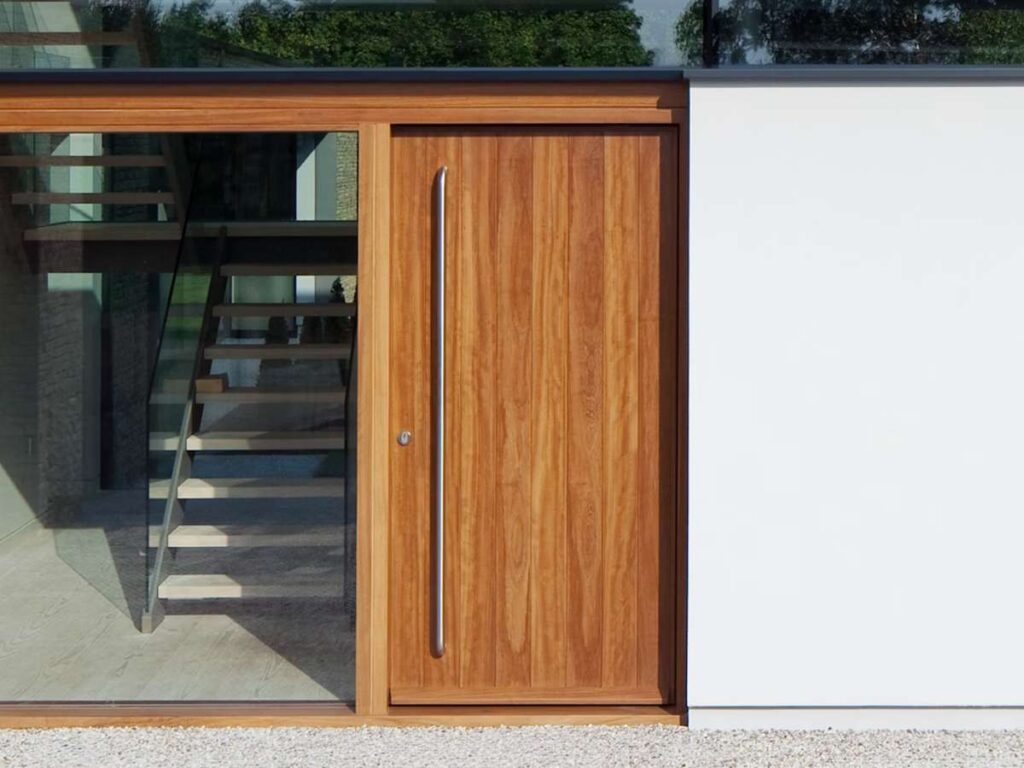
6. Smart Entry Doors (with Digital Locks or Keypads)
Smart entry doors are fitted with electronic locking mechanisms, such as digital keypads, card readers, or fingerprint scanners. They enhance security, streamline access, and remove the hassle associated with traditional keys. These doors are particularly valuable for properties with frequent guest turnover or remote management needs.
Where It Works Best
Smart entry doors are particularly suitable in the following scenarios:
- Serviced Apartments: Ideal for short-term stays or high-turnover residences, simplifying the check-in process. They eliminate the need for physical keys and provide guests with secure and convenient access.
- B&Bs with Remote Check-in: These doors allow guests to arrive anytime without staff intervention. Property managers benefit from easier administration and improved guest satisfaction.
- Hotels with Automated Systems: Smart entry systems integrate seamlessly with existing hotel management technology. They streamline check-in, enhance guest experience, and improve overall operational efficiency.
Pros & Cons
Consider these aspects before implementing smart entry doors:
Pros
- No Physical Keys: Removes the need for traditional keys, reducing the risk of loss or duplication. Offers convenience for both property managers and occupants.
- Easy Reprogramming: Access codes or credentials can be quickly updated for new guests or tenants. This helps maintain security between turnovers.
- Remote Control: Allows property managers to grant or revoke access from a distance. Some systems also provide monitoring features for added oversight.
Cons
- Power Dependent: Requires a reliable power source or battery backup to operate consistently. Without it, access could be disrupted.
- Technical Support Needs: May require professional setup and occasional maintenance. This can add to operational costs over time.
Material + Finish Suggestions
Select materials and finishes that emphasize durability and complement the digital features:
- Steel or Solid-Core Doors: Offers enhanced strength and security to support electronic locking mechanisms. Ensures doors remain resistant to forced entry and heavy usage.
- Matte or Brushed Metal Finishes: Provide a clean, modern appearance that highlights digital components without distracting from overall design. These finishes blend well with contemporary architecture.
- Minimalist Design: Doors with simple, uncluttered lines ensure attention remains focused on functionality. A clean look supports the sophisticated appeal of smart technology.
Final Thoughts
Smart entry doors significantly improve convenience, safety, and guest experiences in hospitality and rental settings. They simplify property management and provide enhanced security through programmable access. However, proper planning for power reliability and ongoing technical support is important to maintain smooth and efficient operations.
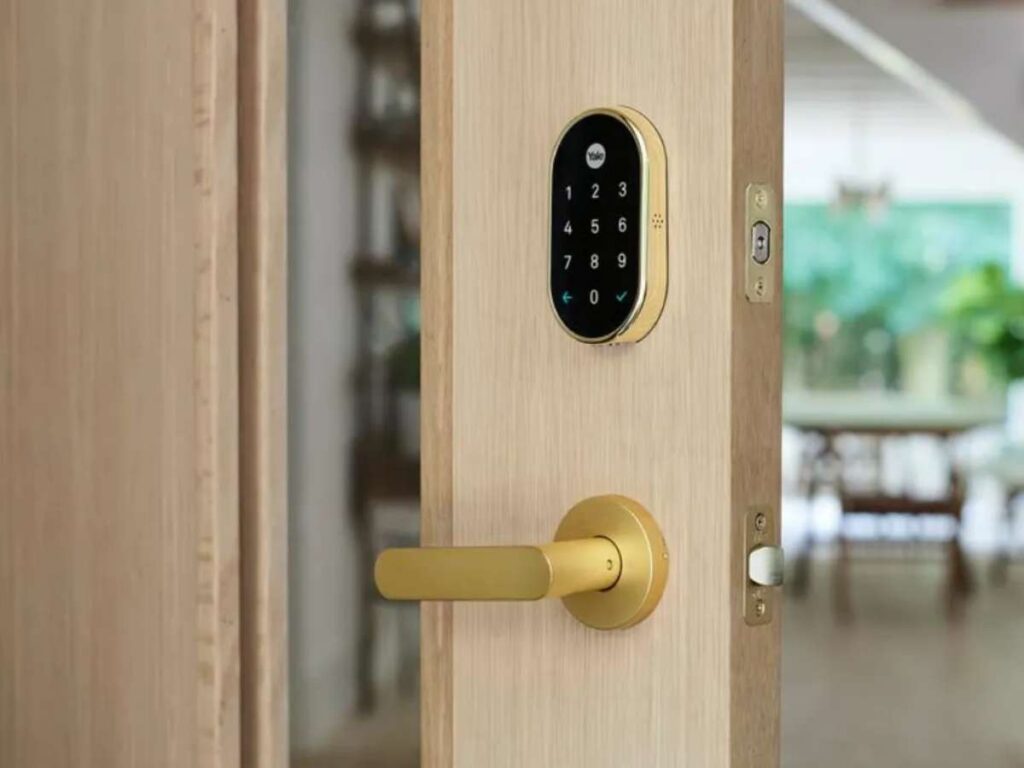
7. Louvered Doors (for Ventilation)
Louvered doors feature angled horizontal slats designed to promote airflow while preserving privacy. These doors help control humidity and prevent moisture build-up in spaces requiring regular ventilation. They’re a practical solution, especially in humid climates, balancing functionality and aesthetic appeal.
Where It Works Best
Louvered doors fit particularly well in these environments:
- Laundry Rooms: Allow airflow that helps clothes and equipment stay dry, reducing mold or mildew formation. The angled slats maintain privacy while ensuring proper ventilation.
- Utility Closets: Help ventilate spaces that house equipment like water heaters or cleaning supplies. This prevents excessive heat or moisture accumulation without fully exposing stored items.
- Bathrooms in Non-Air-Conditioned Areas: Provide necessary airflow to reduce humidity and odor buildup. They maintain privacy without needing additional ventilation equipment.
Pros & Cons
Evaluate these points when considering louvered doors:
Pros
- Improves Airflow: The angled slats allow air to move freely between spaces. This helps maintain ventilation in rooms that might otherwise feel stuffy.
- Moisture Control: Reduces the buildup of humidity, which can prevent mold and mildew. Works well in spaces prone to dampness.
- Lightweight Design: Easy to handle and install compared to heavier solid-core doors. This makes them suitable for quick upgrades or replacements.
Cons
- Low Sound Control: The open slat design allows noise to travel between rooms. This may not be ideal for areas where privacy is important.
- Dust Collection: Slats can trap dust and require more frequent cleaning. Regular maintenance keeps them looking and functioning well.
Material + Finish Suggestions
Select materials based on location and intended use:
- PVC or Aluminum: Ideal choices for humid or coastal areas since they resist moisture damage and corrosion. They require minimal maintenance and perform reliably in harsh environments.
- Painted Wood: Suitable for indoor spaces needing ventilation without direct exposure to moisture. Painted finishes allow doors to blend harmoniously with interior decor.
- Composite Materials: Offer budget-friendly durability and resistance to humidity and temperature changes. They provide balanced performance without a high investment.
Final Thoughts
Louvered doors offer excellent practical solutions for ventilation, particularly in tropical, humid, or moisture-prone environments. Their design effectively balances airflow and privacy, enhancing overall comfort. However, regular maintenance and dusting of slats are necessary to keep these doors performing optimally and looking their best.
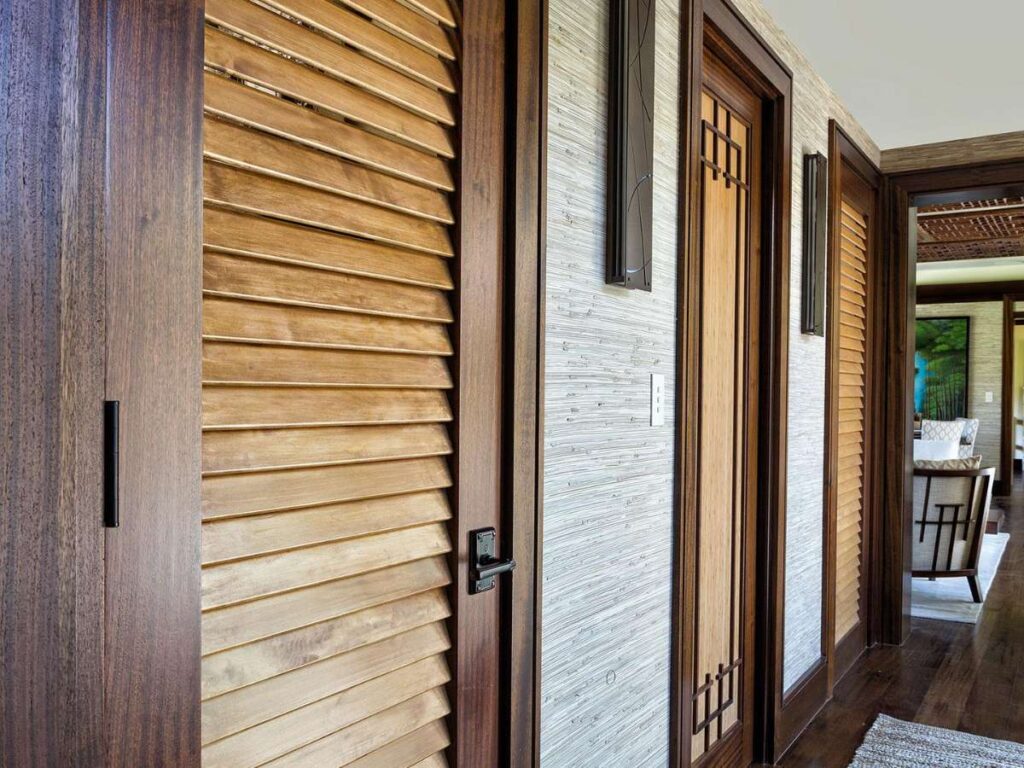
8. Soundproof Solid Core Doors
Soundproof solid core doors are constructed from dense materials specifically designed to reduce noise transfer between rooms or from external environments. These doors significantly improve acoustic comfort, enhancing privacy and quietness within apartments, hotels, or shared living spaces. They’re ideal for locations where minimizing sound disturbances is a high priority.
Where It Works Best
Soundproof solid core doors are especially effective in these applications:
- Apartment Bedrooms: Greatly reduce noise from adjoining rooms or external hallways, creating a more restful environment. These doors ensure occupants have greater comfort and privacy.
- Hotel Rooms: Ideal for minimizing hallway and neighboring room noises, which enhances guest satisfaction and overall comfort. Improved acoustic control contributes positively to guest experiences.
- Shared-Wall Units: Significantly decrease sound transmission between adjacent apartments or shared spaces. They’re particularly beneficial in maintaining privacy and comfort in densely populated buildings.
Pros & Cons
Evaluate these considerations when choosing solid core soundproof doors:
Pros
- Noise Reduction: The dense core material blocks sound effectively between rooms. This improves privacy and comfort in shared spaces.
- Strong Build: Offers better strength and durability compared to hollow-core doors. Can handle frequent use without losing performance.
- Enhanced Privacy: Creates a quieter, more secluded environment. Ideal for bedrooms, offices, or hospitality spaces where peace is important.
Cons
- Heavy Weight: Considerably heavier than hollow-core doors, which require sturdy hinges and reinforced frames. This can add to installation time and cost.
- Higher Price: More expensive than hollow-core options due to the solid construction. The investment pays off in durability and performance but may impact budget planning.
Material + Finish Suggestions
Consider these options to enhance both acoustic performance and aesthetics:
- Painted MDF or Wood Veneer: These finishes provide attractive appearance options, ranging from sleek painted looks to natural wood textures. They effectively combine visual appeal with sound control.
- Acoustic Seals and Edging: Specialized acoustic seals placed around the door’s edges enhance noise-blocking capabilities. This further improves privacy and reduces sound leakage.
- Matching Trim and Hardware: Coordinated trim and hardware create a clean, cohesive appearance. They help ensure the doors blend seamlessly into any interior design theme.
Final Thoughts
Solid core soundproof doors significantly boost acoustic privacy and occupant comfort, which is particularly beneficial in residential, hospitality, or multi-unit environments. While their increased weight and cost require planning, the enhanced user experience usually justifies the investment. However, careful attention to installation details and finishes is necessary to maximize their soundproofing capabilities.
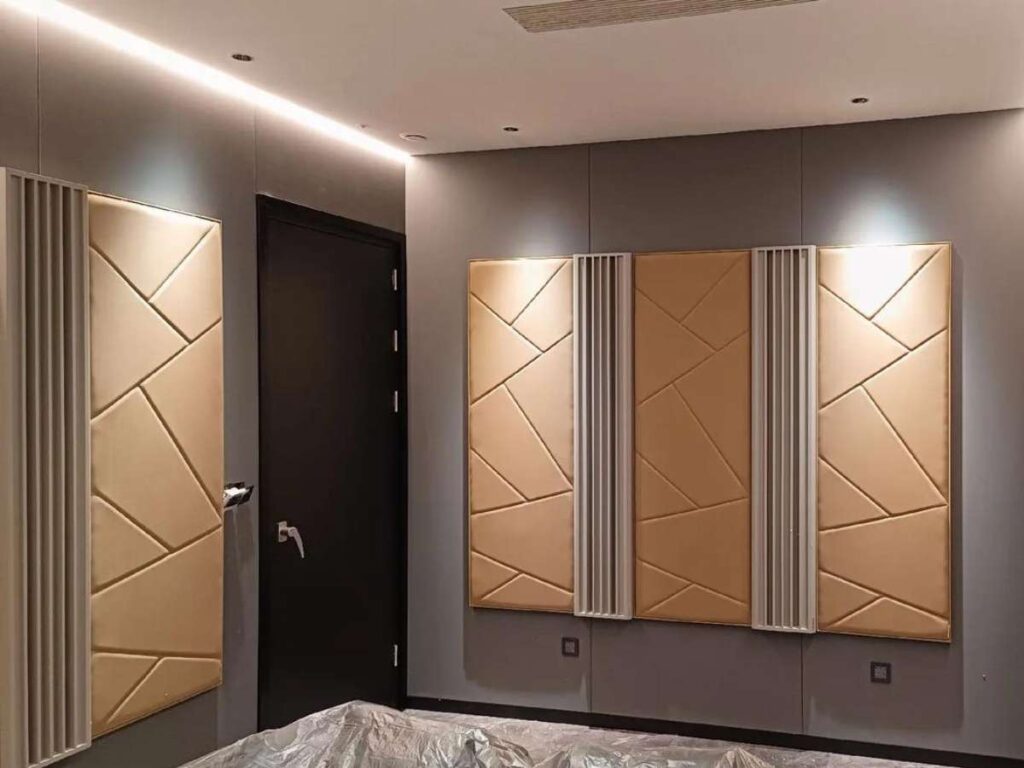
9. Powder-Coated Steel Doors
Powder-coated steel doors feature a durable, baked-on finish created by applying a dry powder coating. This process provides a smooth and resilient surface that’s resistant to chipping, scratching, and weather damage. They’re particularly beneficial in areas experiencing frequent use or harsh environmental conditions.
Where It Works Best
Powder-coated steel doors suit the following applications particularly well:
- Exterior Apartment Entries: These doors withstand heavy daily usage, making them an ideal solution for busy residential entryways. The durable finish resists weather and frequent handling, keeping doors looking new longer.
- Hotel Utility Areas: Suitable for maintenance rooms or utility entrances requiring durable protection. They resist scratches, impacts, and other common damages, reducing ongoing maintenance costs.
- Stairwell and Back Access Points: Essential for high-traffic emergency exits and stairwells needing robust construction. They ensure reliable performance, even under intensive daily use or exposure to outdoor elements.
Pros & Cons
Consider these factors before selecting powder-coated steel doors:
Pros
- Scratch Resistant: The powder-coated finish holds up well against scratches and chips. This makes it ideal for high-traffic or frequently used areas.
- Low Maintenance: Requires minimal upkeep compared to painted finishes. Cleaning is simple and helps the surface maintain its original appearance.
- Long-Lasting Finish: The baked-on coating resists fading and wear over time. Keeps the door looking attractive for many years.
Cons
- Industrial Appearance: Without thoughtful color or finish choices, these doors can look overly utilitarian. Selecting refined colors or adding design elements can soften the look.
- Limited Texture Options: The finish does not offer the same depth or variation as natural wood. This can make it harder to achieve certain aesthetic styles.
Material + Finish Suggestions
Choosing the right finish helps achieve optimal aesthetic and functional results:
- Matte Black: Offers a contemporary, sophisticated look, blending easily with modern exterior or interior designs. Its matte finish is subtle yet visually appealing.
- Light Bronze: Provides warmth and a sense of elegance, complementing various architectural styles. Ideal for adding refined detailing without overwhelming the space.
- Neutral Gray: Versatile and adaptable, this neutral finish integrates seamlessly into a variety of design schemes. It offers simplicity, making doors visually unobtrusive yet attractive.
Final Thoughts
Powder-coated steel doors offer exceptional durability and practicality, especially for high-traffic settings. Vallisco provides powder-coated steel doors specifically made for challenging environments, maintaining visual appeal. However, careful selection of finishes and styling helps doors complement your building’s overall aesthetic.
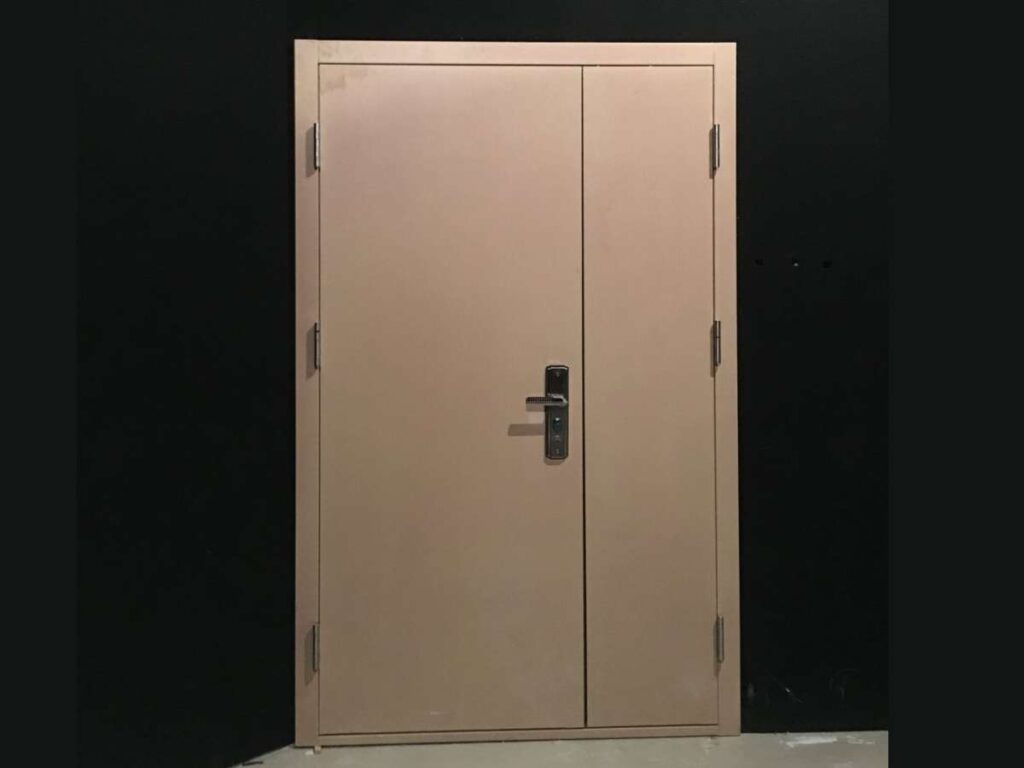
10. Panel Doors with Molded Designs
Panel doors with molded designs have raised or recessed panels formed into their surfaces, adding depth and visual detail. These doors provide subtle decorative appeal, making interiors feel polished without needing extensive changes. They strike a good balance between style, affordability, and versatility.
Where It Works Best
Panel doors with molded designs suit these applications particularly well:
- Guest Bedrooms: Ideal for enhancing guest spaces with subtle detail, making rooms feel welcoming and thoughtfully designed. They elevate simple spaces without extensive costs.
- Boutique Hotel Rooms: Perfect for boutique-style properties aiming for a refined yet affordable interior. Molded panels offer decorative interest while maintaining consistency across multiple rooms.
- Interior Apartment Doors: Suitable for upgrading internal apartment doors, adding visual depth without major renovations. They quickly improve aesthetics in otherwise basic interiors.
Pros & Cons
Evaluate these factors before selecting panel doors with molded designs:
Pros
- Decorative Appeal: Adds subtle visual interest without overwhelming the space. Works well when you want to elevate a room’s look with minimal effort.
- Budget-Friendly: An affordable way to introduce style compared to more elaborate door designs. Widely available from many suppliers.
- Versatile Design: Fits both modern and traditional interiors. The panel layout can be selected to match the property’s overall style.
Cons
- Dust Buildup: Grooves and recessed areas can collect dust over time. Regular cleaning helps maintain a fresh appearance.
- Can Look Dated: Certain panel shapes or patterns may feel outdated. Selecting timeless styles keeps the door relevant for longer.
Material + Finish Suggestions
Select finishes based on desired style and practicality:
- Primed MDF: Ideal for doors intended for custom painting. Provides a smooth, uniform surface suitable for personalized color choices.
- Wood Veneer: Offers a natural wood appearance, providing warmth and texture. Suitable for traditional interiors or rooms needing a softer aesthetic.
- Two-Tone Paint: Creates visual contrast and highlights molded panels effectively. Useful for enhancing door details without overwhelming interior designs.
Final Thoughts
Panel doors with molded designs effectively balance decorative detail with practical affordability. They allow property managers and owners to enhance interiors without major expenses. However, careful attention to selecting panel styles and finishes helps avoid dated aesthetics and ensures the doors remain attractive over time.
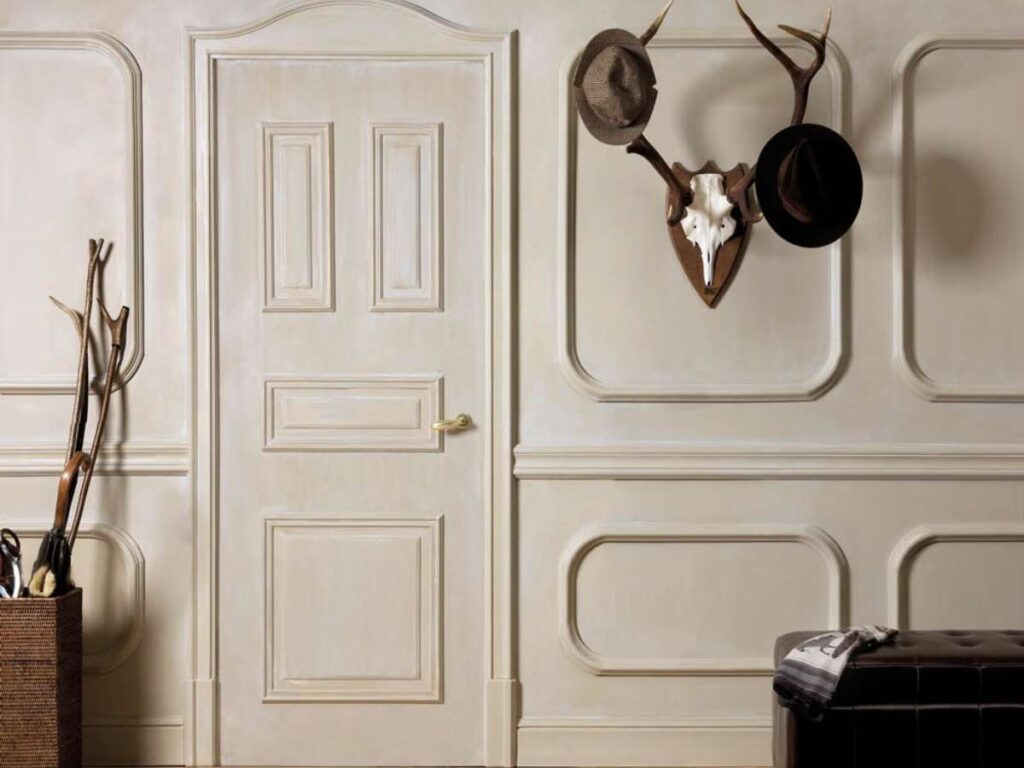
11. uPVC or PVC Doors (Water-Resistant)
uPVC or PVC doors are plastic-based doors made from polyvinyl chloride, designed specifically to resist water, humidity, and everyday wear. They effectively prevent common moisture-related issues such as warping, swelling, and rotting. Lightweight and budget-friendly, these doors provide reliable performance in wet or humid environments.
Where It Works Best
uPVC doors are especially beneficial in these spaces:
- Bathroom Doors: Ideal for bathrooms that frequently experience high humidity or direct water contact. They remain dimensionally stable, preventing sticking or swelling.
- Laundry Rooms: These doors resist moisture and dampness, making them a practical choice for laundry areas. They require minimal upkeep and stay unaffected by steam or condensation.
- Kitchen Back Exits: Suitable for areas with regular exposure to water or humidity from cooking activities. They maintain their appearance and functionality even under frequent daily use.
- Balconies in Tropical Climates: Perfect for exterior balcony doors exposed to rain or humidity. They provide lasting durability and ease of maintenance in harsh weather conditions.
Pros & Cons
Consider these points when choosing uPVC doors:
Pros
- Moisture Resistance: Fully withstands water and humidity without swelling, rotting, or peeling. Ideal for bathrooms, laundry rooms, and other wet areas.
- Budget-Friendly: An economical choice that offers good performance for the price. Works well for projects with tight cost limits.
- Low Maintenance: Requires minimal upkeep compared to natural wood or metal options.
Cons
- Less Natural Look: Does not have the authentic grain or warmth of real wood. Faux finishes help, but may not match high-end aesthetics.
- Lower Impact Strength: Less resistant to heavy force compared to solid-core or metal doors. Best suited for low-impact environments.
Material + Finish Suggestions
uPVC doors are available in several appealing finishes:
- White or Light Gray: These neutral shades provide clean, fresh aesthetics ideal for modern interiors. They also blend easily with most décor styles.
- Faux Wood Textures: Offers a convincing wood-like appearance without maintenance concerns. Ideal for properties seeking a natural look without compromising water resistance.
- Glossy or Matte Options: Both finishes offer distinct aesthetic benefits—glossy surfaces provide a sleek look, while matte finishes give subtle sophistication. Choose based on interior style preference and ease of cleaning.
Final Thoughts
uPVC doors are a practical, budget-conscious solution for spaces frequently exposed to moisture or humidity. They significantly reduce maintenance efforts and long-term repair expenses associated with traditional wooden doors. However, selecting quality finishes can greatly improve their visual appeal, offsetting the artificial look often associated with plastic-based materials.
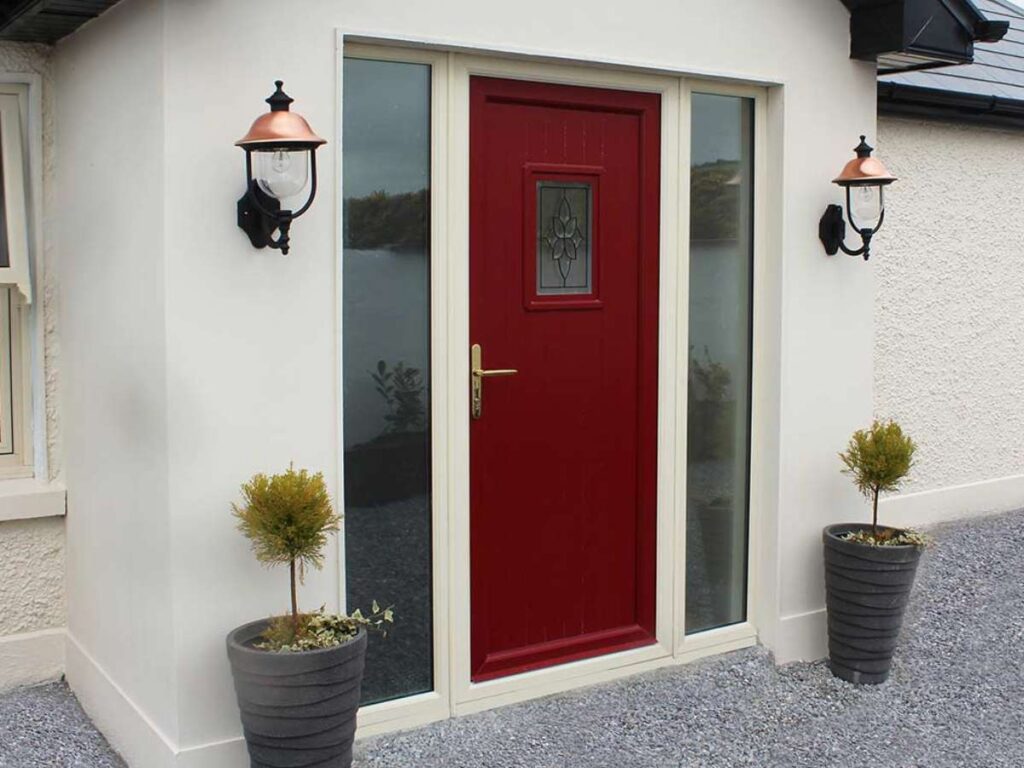
12. Glass + Aluminum Frame Doors (Interior or Balcony Use)
Glass and aluminum frame doors combine sleek metal borders with either frosted or clear glass panels. They’re commonly used to separate indoor and outdoor areas, helping brighten interior spaces while maintaining structure and style. These doors are especially useful in compact apartments or layouts with limited natural light.
Where It Works Best
Glass + aluminum doors are a smart choice for the following placements:
- Balcony or Patio Entrances: Allow natural light to enter while offering a clear or frosted barrier. They create a sense of openness without removing separation.
- Interior Dividers: Used between kitchens, living areas, or dining rooms, these doors keep spaces connected without making them feel closed off. They help distribute light and maintain a modern look.
- Shared Courtyards in Apartments: Useful for units that open into internal shared spaces. They offer structure and privacy while keeping visual access to outdoor or semi-private areas.
Pros & Cons
Here’s what to consider when specifying these doors:
Pros
- Better Light Flow: Brings natural light into darker areas, brightening spaces without extra windows.
- Modern Appearance: Delivers a sleek, updated style that works well with contemporary interiors.
- Opens Small Rooms: Creates a sense of space and connection between rooms, making them feel larger.
Cons
- Reduced Privacy: Clear glass without frosting or treatment can limit privacy in certain areas.
- Visible Marks: Fingerprints and smudges show easily on glass, requiring regular cleaning to keep it looking clear.
Material + Finish Suggestions
Popular options to customize the look and performance of these doors include:
- Clear or Frosted Glass: Clear glass maximizes visibility and brightness, while frosted glass adds privacy. Both options work well depending on room function and desired light control.
- Black or Silver Aluminum Frames: Black frames give bold contrast and suit modern interiors, while silver offers a softer, more neutral tone. Both finishes are low-maintenance and corrosion-resistant.
- Slim or Wide Frame Styles: Slim frames deliver a minimalist look, ideal for modern spaces. Wider frames add definition and structure, making the door feel more solid and architectural.
Final Thoughts
Glass and aluminum frame doors offer a practical way to brighten interiors and connect spaces visually without removing barriers. They work well in both residential and hospitality settings where openness and clean lines are a priority. However, selecting the right glass type and frame finish is key to balancing light, privacy, and aesthetics effectively.
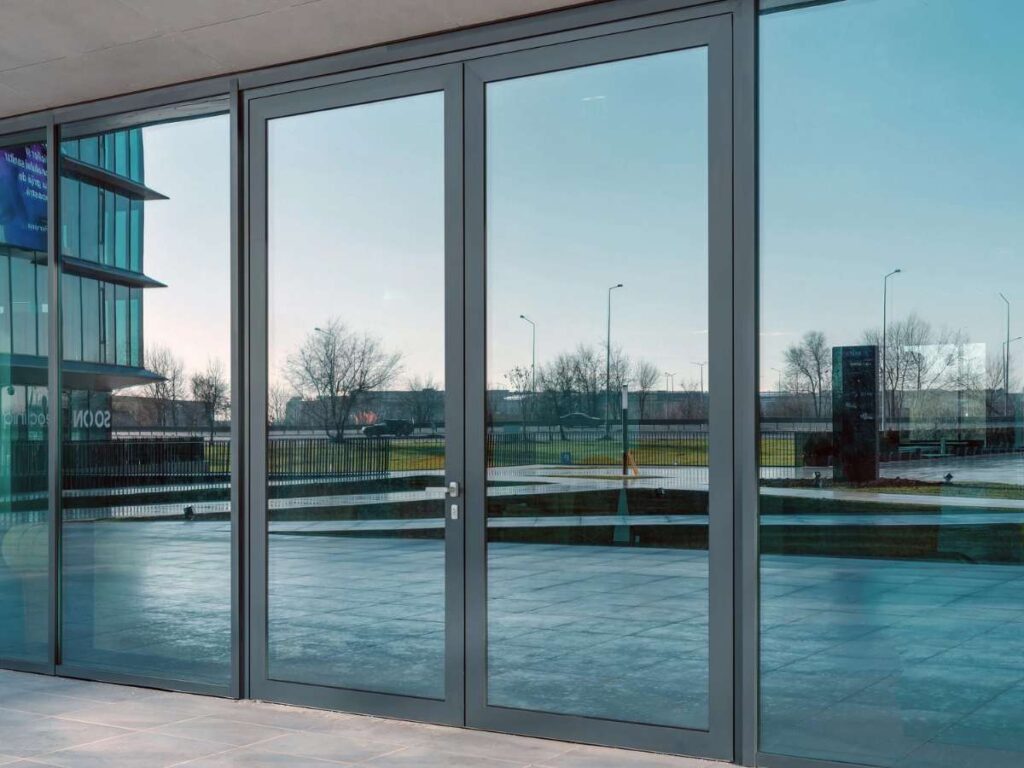
Final Tips Before You Choose
Choosing an apartment door goes beyond looks: it’s about matching performance to the space, user, and daily conditions. Based on real-world projects, these points can help avoid common mistakes.
- Environment Fit: Consider humidity, temperature changes, and exposure. In coastal or damp regions, wood can swell or crack, while uPVC or powder-coated steel from brands like Vallisco lasts longer with less maintenance.
- User Needs: Think about who will use the space most. Rentals may benefit from digital locks for easy check-ins, while family apartments often need better soundproofing and sturdy construction.
- Function First: Performance should come before appearance. You can upgrade style with trims or hardware later, but poor functionality will cause ongoing frustration.
- Check Samples: Photos rarely show true texture and color. Request finish samples to see gloss, grain, and tone under real lighting conditions.
- Ask Questions: A good supplier explains installation, upkeep, and performance clearly. Clear details now prevent costly issues later.
- Think Long Term: A quality door can serve for years with minimal repairs. A careful selection now saves time and money in the future.
Small, well-informed choices often lead to the biggest improvements. A door chosen with purpose adds value, comfort, and reliability to the space.
Conclusion
Back then, I had no idea how much a door could impact space. Now, after working with hotels, villas, and apartments, I’ve learned the hard way and the smart way.
This article gives you a short list. The practical picks and real ideas that get installed, not just pinned on mood boards.
Doors shape the first impression. They also shape function, flow, and safety.
So, what will yours say? Ready to decide with clarity?
Contact Vallisco today and let’s get the right doors into your hands.
Discover More Options
For more helpful content, explore our collection of recommended reads:
- Door Manufacturing: A Step-by-Step Guide
- 10 Best Doors for Studio Apartments
- Top Benefits of Installing Steel Apartment Doors
- Top 8 Apartment Bathroom Door Styles to Know
Still haven’t found what you’re looking for? Don’t hesitate to contact us. We’re available around the clock to assist you.


